Unraveling the Mysteries of Mammoth Extinction: Causes and Ramifications Explored
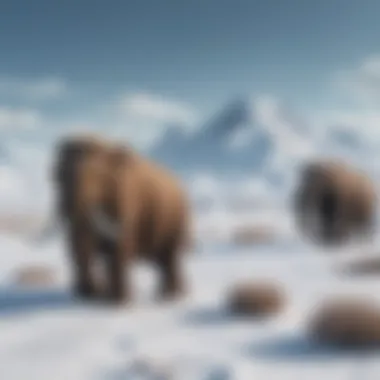

Technology Insights
Among the various intriguing aspects of the mammoth extinction saga, technological advancements promise to shed new light on this ancient enigma. The integration of cutting-edge technologies like DNA analysis and radiocarbon dating techniques has revolutionized our understanding of prehistoric events. These innovative methodologies enable researchers to decipher genetic codes from fossil remains with unprecedented precision, unraveling the mysteries hidden within the ancient DNA strands. As scientific tools continue to evolve, the investigation into mammoth extinction becomes not just a journey through the past, but a testament to the limitless possibilities of modern technology.
Introduction
In the realm of paleontology, one cannot overlook the enigmatic beasts that once roamed the earth - mammoths. These colossal creatures, relatives of modern-day elephants, have captivated the curiosity of scientists and enthusiasts alike for decades. The looming mystery behind their extinction serves as a puzzle piece in the grand narrative of our planet's history. By unraveling the causes and consequences of mammoth extinction, we not only elucidate the fate of these iconic beings but also gain valuable insight into the delicate balance of prehistoric ecosystems.
Overview of Mammoths
Mammoths, charismatic megafauna of the Ice Age, represented a crucial aspect of Pleistocene fauna. Their towering presence and adaptability to diverse environments shaped the ecosystem dynamics during their reign. From the woolly mammoth cloaked in fur adapted to frigid climates to the Columbian mammoth thriving in warmer regions, each species exhibited unique characteristics reflective of their habitats. Their imposing stature and herbivorous diet significantly influenced vegetation patterns, making them key players in shaping the landscape of the ancient world.
Significance of Mammoths in the Ecosystem
Mammoths held a pivotal role as keystone species within their ecosystems. Their grazing habits maintained grasslands, preventing the encroachment of forests and promoting biodiversity. By trampling and uprooting vegetation, mammoths reshaped landscapes, creating niches for smaller herbivores and altering plant composition. Their presence had a cascading effect on flora and fauna, demonstrating the interconnectedness of species within an ecosystem.
Purpose of the Article
This article embarks on a quest to demystify the factors contributing to the demise of mammoths and the subsequent impact on the environment. By examining the historical context, scientific theories, and ecological repercussions of mammoth extinction, we aim to provide a comprehensive account of this significant event in natural history. Through a deep dive into the past, we seek to unearth valuable insights that can inform conservation efforts and broaden our understanding of the intricate web of life on Earth.
Factors Contributing to Mammoth Extinction
There are pivotal factors that contributed to the extinction of mammoths, marking a critical juncture in the history of these majestic creatures. This section delves into the importance of understanding the intricate web of elements that led to the demise of mammoths and its reverberating consequences on the ecosystem.
Climate Change
Impact of Ice Age
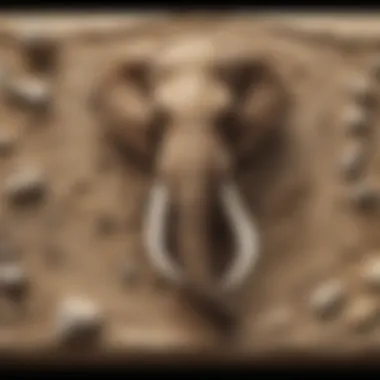

The profound Impact of Ice Age played a decisive role in altering the landscape and climate dynamics, setting the stage for the challenges mammoths faced. This period was characterized by extreme cold temperatures and widespread glaciation, forcing mammoths to adapt to harsh conditions. The unique feature of the Ice Age's impact lies in its transformative effect on habitats, leading to a scarcity of resources vital for mammoths' survival. Understanding this aspect is crucial in comprehending the implications of climatic shifts on mammoth populations.
Shifts in Temperature Patterns
The fluctuating Shifts in Temperature Patterns further compounded the challenges faced by mammoths during their struggle for existence. These variations in temperature disrupted ecological balance, impacting the availability of food sources and influencing migration patterns. The key characteristic of temperature shifts is their role in shaping the habitats where mammoths thrived, leading to both advantages and disadvantages in their quest for sustenance. By examining these temperature fluctuations, insights can be gleaned into the complexities of mammoth extinction.
Human Interaction
Hunting Pressure
The relentless Hunting Pressure exerted by early humans significantly exacerbated the already strained survival prospects of mammoths. The widespread hunting of these colossal creatures for food, tools, and cultural practices accelerated their decline. The unique feature of hunting pressure lies in its direct impact on reducing mammoth populations to unsustainable levels, triggering a cascade of ecological repercussions. Analyzing the effects of human predation sheds light on the intricate relationship between early humans and mammoths, underscoring the challenges posed by human activities on large mammal species.
Habitat Destruction
The pervasive Habitat Destruction caused by human expansion further contributed to the dwindling habitats available to mammoths. The key characteristic of habitat destruction is its irreversible impact on the ecosystems where mammoths once thrived, leading to fragmentation and loss of crucial habitats. This process not only disrupted the intricate balance of species interactions but also propelled mammoths closer to the brink of extinction. Understanding the ramifications of habitat loss is essential in deciphering the broader implications of human activities on prehistoric megafauna.
Theories Surrounding Mammoth Extinction
Understanding the various theories behind mammoth extinction is crucial in dissecting the complex tapestry of factors that led to the demise of these majestic creatures. Delving into the Overkill Hypothesis sheds light on the debate among scientists regarding the extent to which human hunting activities contributed to the rapid decline of mammoth populations. This hypothesis posits that overexploitation by early humans played a significant role in decimating mammoth numbers. The Climate Change Hypothesis, on the other hand, explores how shifting environmental conditions, particularly the impact of warming trends, may have disrupted the delicate balance of mammoth ecosystems. By unraveling these theories, scientists aim to reconstruct the past dynamics that culminated in mammoth extinction.
Overkill Hypothesis
Exploring the contentious topic of the Overkill Hypothesis unveils a rich tapestry of perspectives and disagreements among scientists. The debate among scientists revolves around the question of whether human hunting practices alone were responsible for the decline of mammoths or if other environmental factors also played a crucial role. This debate is central to understanding the intricate web of interactions that shaped the fate of mammoths and highlights the diverse viewpoints within the scientific community. The appeal of the Overkill Hypothesis lies in its potential to offer a straightforward explanation for mammoth extinction, yet its oversimplification of complex ecological dynamics is a point of contention among researchers. By examining the nuances of this debate, we gain valuable insights into the challenges of piecing together the puzzle of mammoth disappearance.
Climate Change Hypothesis
Analyzing the profound implications of the Climate Change Hypothesis uncovers a multifaceted narrative of how environmental shifts may have triggered mammoth extinction. The Effect of Warming Trends stands out as a pivotal aspect of this hypothesis, suggesting that rising temperatures could have led to habitat modifications that negatively impacted mammoth survival. This key characteristic of the Climate Change Hypothesis underscores the interconnectedness of climate dynamics and ecological stability. While this hypothesis offers a comprehensive lens through which to understand the broader implications of climate change on prehistoric megafauna, it also raises complex questions about the interplay between natural climate variations and human activities. By delving into the unique features of the Climate Change Hypothesis, we confront the challenges of disentangling the synergistic effects of environmental factors on mammoth populations.
Disease Outbreaks
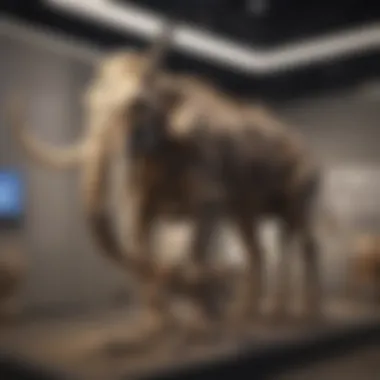
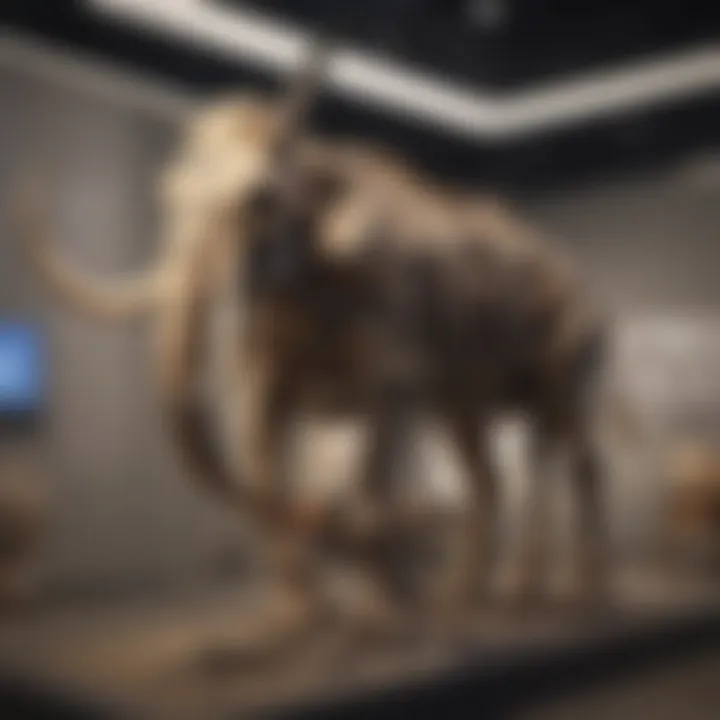
Exploring the potential role of disease outbreaks in mammoth extinction unveils a lesser-known aspect of the narrative surrounding the demise of these ancient giants. While not as prevalent in mainstream discourse as human-driven or environmental causes, the possibility of diseases decimating mammoth populations offers a nuanced perspective on the vulnerabilities faced by these creatures. Investigating the hypothesized impact of diseases on mammoths prompts us to consider the subtle yet potent effects of pathogens on ecosystem dynamics and species interrelationships. This exploration of disease outbreaks as a contributing factor to mammoth extinction showcases the intricate web of variables that shaped the evolutionary trajectory of these magnificent creatures.
Impact of Mammoth Extinction
The Impact of Mammoth Extinction is a crucial aspect discussed in this article. Understanding the repercussions of the disappearance of mammoths is essential to grasp the broader ecological implications. By delving into the aftermath of their extinction, we can unravel the intricate connections within the ecosystem that were disrupted by the absence of these colossal creatures. This section sheds light on the far-reaching consequences that reverberated through the environment due to the extinction of mammoths, emphasizing the intricate ecosystem dynamics that were altered permanently.
Ecological Consequences
Changes in Ecosystem Dynamics
Exploring the Changes in Ecosystem Dynamics reveals the profound impact mammoth extinction had on shaping the environment. The shift in vegetation patterns, soil composition, and nutrient cycling showcases the pivotal role mammoths played in maintaining ecological balance. Their grazing habits influenced plant growth and distribution, shaping the landscape in distinctive ways. Understanding these changes provides valuable insights into the intricate web of interactions within the ecosystem and highlights the cascading effects triggered by the absence of mammoths. This detailed analysis emphasizes the intricate interplay between flora and fauna, underscoring the significance of mammoths as ecosystem engineers.
Loss of Keystone Species
The Loss of Keystone Species such as mammoths had ripple effects throughout the ecosystem, causing disruptions that echoed across trophic levels. As keystone species, mammoths exerted a disproportionate influence on their environment, shaping habitat structure and species diversity. Their extinction led to a domino effect, impacting plant communities, predator-prey relationships, and overall ecosystem stability. Understanding the implications of losing a keystone species like mammoths provides a holistic view of ecosystem dynamics and underscores the need to preserve biodiversity for long-term ecological resilience. This segment delves deep into the concept of keystone species and elucidates the pivotal role mammoths played in maintaining ecosystem equilibrium.
Cultural Significance
Paleolithic Artifacts
Exploring the significance of Paleolithic Artifacts unveils the cultural richness intertwined with mammoths. The archaeological evidence linking humans and mammoths showcases a deep-rooted connection that transcends time. From cave paintings to tools crafted from mammoth bones, these artifacts provide a window into prehistoric societies and their intricate relationship with these majestic animals. Analyzing the cultural significance of Paleolithic artifacts sheds light on ancient beliefs, practices, and artistic expressions centered around mammoths, offering a glimpse into a bygone era rich in symbolism and reverence.
Human-Mammoth Interaction
The interaction between humans and mammoths illuminates a complex interplay between two iconic species. From ancient hunting practices to symbolic representations, the connection between humans and mammoths reverberates through history. Studying this interaction unveils the multifaceted ways in which mammoths influenced human culture and vice versa. Exploring the nuances of human-mammoth interaction provides a deeper understanding of how these behemoths shaped human evolution, cultural practices, and societal narratives over millennia. This section delves into the intricate relationship between humans and mammoths, highlighting the intertwined paths these species traversed through time.
Scientific Insights
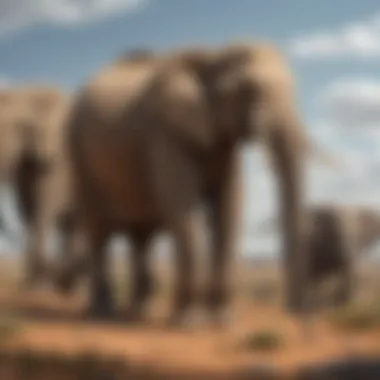
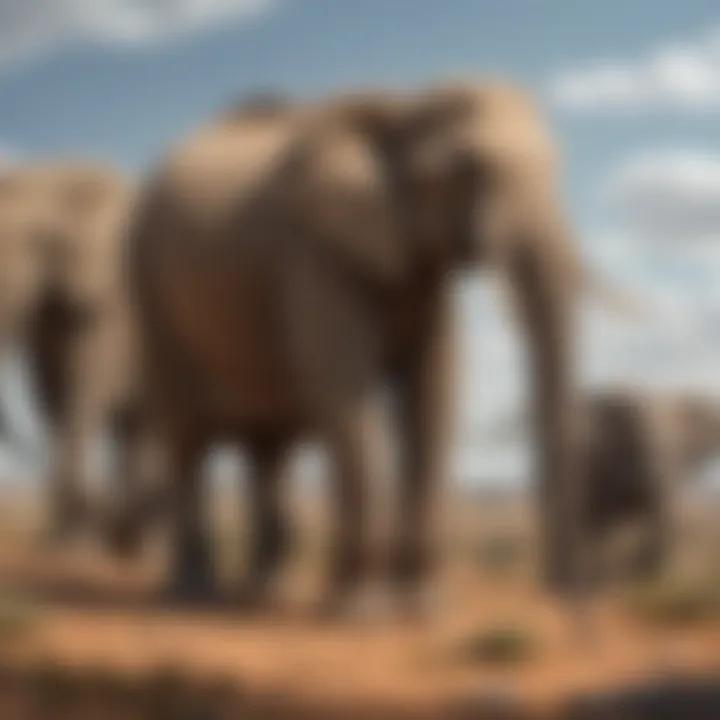
Research on Mammoth Fossils
Delving into Research on Mammoth Fossils unravels the scientific endeavors aimed at deciphering the mysteries buried in prehistoric remains. The study of mammoth fossils offers invaluable insights into their biology, behavior, and evolutionary history. By analyzing genetic data, skeletal remains, and environmental contexts, researchers can reconstruct the world inhabited by mammoths. This exploration of mammoth fossils not only advances our knowledge of these extinct creatures but also provides clues to understanding past climates, ecosystems, and extinction patterns. Examining the scientific insights derived from mammoth fossils enhances our grasp of evolutionary processes, ecological interactions, and the fragility of species in the face of environmental challenges.
Current Preservation Efforts
Current Preservation Efforts play a crucial role in understanding and safeguarding the remnants of mammoths for future generations. As human activities have significantly impacted mammoth habitats and populations, conservation initiatives aim to mitigate these effects by implementing strategic measures. By focusing on key elements such as Mammoth Cloning and Conservation Initiatives, this article sheds light on the diverse approaches taken to preserve the genetic heritage and ecological significance of mammoths.
Mammoth Cloning
Advancements in Biotechnology
Advancements in Biotechnology have revolutionized the field of genetic engineering and cloning, offering unprecedented possibilities for preserving extinct species like mammoths. The key characteristic of these advancements lies in their ability to extract viable DNA samples from preserved mammoth remains, paving the way for cloning procedures. The utilization of cutting-edge technologies enables scientists to recreate genetic sequences and potentially bring extinct species back to life. While the process raises ethical and scientific debates, the prospect of resurrecting mammoths using biotechnology remains a captivating and contentious subject in contemporary discourse.
Conservation Initiatives
Protecting Mammoth Habitats
Protecting Mammoth Habitats plays a vital role in maintaining the ecological balance and biodiversity of specific regions marked by mammoth presence. The key characteristic of this initiative involves the identification and preservation of natural landscapes that supported mammoth populations historically. By conserving these habitats, conservationists ensure the protection of not only mammoth remains but also the broader ecosystem they were a part of. The unique feature of this approach lies in its focus on habitat restoration and management to create conducive environments for potential mammoth reintroduction efforts. While challenges such as land use conflicts and limited resources exist, the importance of protecting mammoth habitats remains paramount in securing the legacy of these majestic creatures.
Conclusion
In the grand tapestry of historical ecology, the conclusion of the mammoth era holds a pivotal place. The extinction of mammoths reverberates through time, highlighting the fragility of ecosystems and the intricate balance of species within them. This article serves as a tribute to the mammoths, shedding light on their disappearance and the aftermath that ensued. Understanding the causes of mammoth extinction is not just an academic pursuit but a reflection of how human activities and environmental changes can shape the destiny of entire species. By delving into the mammoth extinction narrative, we gain a profound insight into the interconnectedness of life on Earth.
Summary of Key Points
The journey into the extinction of mammoths unveiled a tapestry of factors contributing to their demise. From the stark impacts of climate change to the relentless pressure exerted by human societies, mammoths faced multifaceted challenges that ultimately led to their extinction. Theories surrounding their disappearance provided diverse perspectives, each adding a layer of complexity to the story. The ecological consequences of losing mammoths reverberated through ecosystems, redefining dynamics and reshaping landscapes. Their cultural significance resonated through art and human interactions, painting a vivid picture of a coexisting past. Scientific endeavors continue to unravel the mysteries encapsulated in mammoth fossils, enriching our understanding of the past.
Reflection on Mammoth Extinction
Contemplating the mammoth extinction evokes a sense of loss, a chapter closed in the book of Earth's history. The decline of these iconic creatures serves as a stark reminder of the intricate web of life and the impermanence of existence. Reflecting on their disappearance urges us to introspect on our relationship with nature and our responsibility towards preserving biodiversity. From the northeastern landscapes of Siberia to the artistic expressions etched in caves, mammoths leave an indelible mark on human consciousness, intertwining our narratives beyond time.
Future Implications
As we stand on the precipice of an uncertain future, the repercussions of mammoth extinction continue to reverberate. Understanding the lessons embedded in their disappearance is crucial for shaping our interactions with the environment and safeguarding vulnerable species. The echoes of mammoths echo through conservation initiatives and scientific advancements, guiding our quest to redefine our relationship with nature. The future holds the promise of resurrecting mammoths through cloning technologies, raising ethical dilemmas and reshaping ecological paradigms. The implications of mammoth extinction extend beyond the realms of history, beckoning us to embark on a journey of preservation and coexistence.







